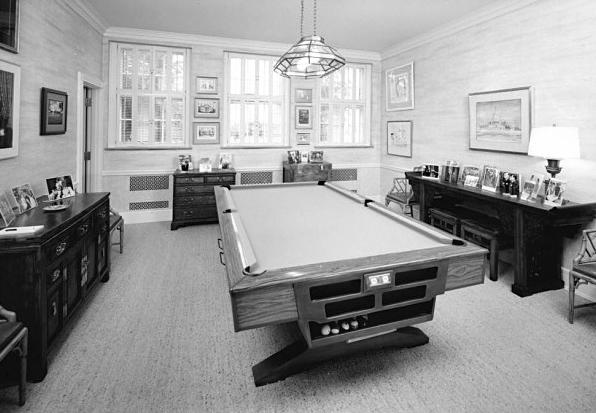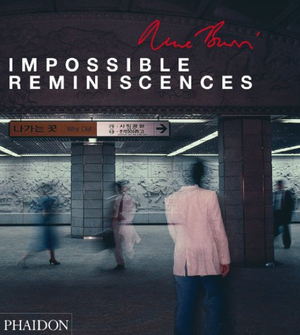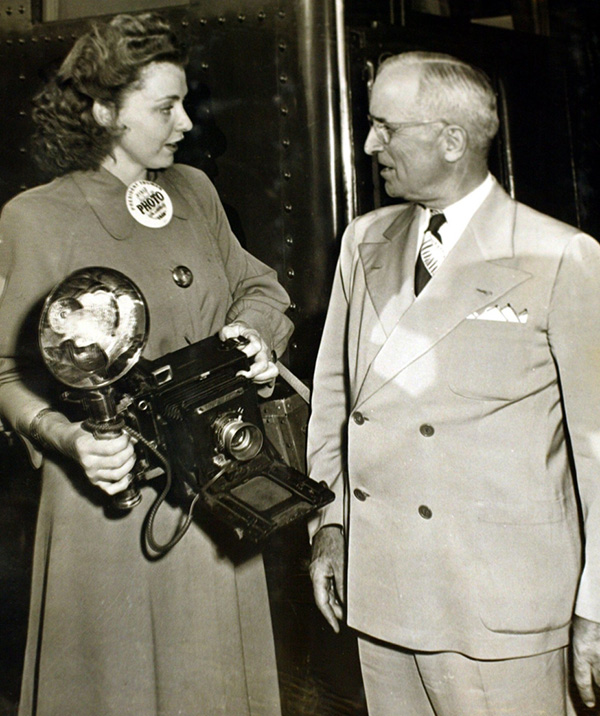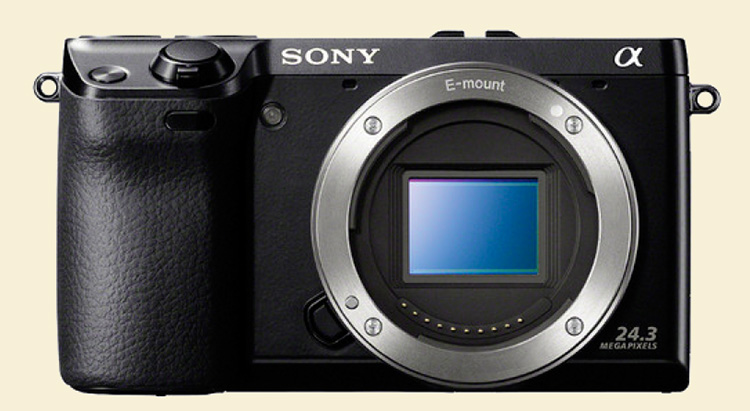Phonecamera: If the common garden camera-in-a-smartphone is a "cameraphone," then the new hybridized wonder from Samsung, the world's largest company that makes cameras*, must be a phonecamera—because it's turned backwards, or inside-out, from the normal emphasis. Instead of being a smartphone that happens to have a camera in it, it's a camera that allows you to dispense with your smartphone. I've got to admit I like it when companies think outside of the little polycarbonate box. It's called the Galaxy NX, and although you can't quite get one yet, it's apparently going to be an actual buyable product soon.
Winograd is grand: Geoff Dyer, one of the more interesting writers on photography in recent years, has published a shortish exhibition review about Garry Winogrand in the London Review of Books. I haven't read it yet, but if author and subject align normally it should be worth our attention.
And Jacob Mikanowski writes about Winogrand at The Awl. Did you know Winogrand wasn't born with that name? His name was originally Winograd. The "grand" was a misspelling that he adopted—with a sort of nihilistic shrug, one imagines.
The book is here.
Oddly, some Amazon pages, including this one, recently had formal notices that essentially said Amazon's right hand didn't know what its left one was doing. Everything seems to be back in order with this particular book now, however.
 The Game Room of the White House in 1992. In Harry Truman's time it was a guest bedroom. Photo courtesy White House Museum
The Game Room of the White House in 1992. In Harry Truman's time it was a guest bedroom. Photo courtesy White House Museum
America's most famous billiards addict besides me: Abraham Lincoln. Seriously. He had a Brunswick pool table in his White House and played frequently—often alone, using it as time to think in peace.
I'm using that excuse, by the way. Yeah, that's it—I'm thinking.
Steidl on Netflix: Speaking of books, as I was above, there's a documentary on Netflix about the indefatigable Gerhard Steidl and how he makes books. Again, I haven't seen this yet (I probably should watch it, given our recent ambitions), but (again) if the stars line up as expected....
 Wha...? Who...? The biggest change in photography in the last twenty years is not film to digital, it's black-and-white to color. Turns out some photographers you'd never suspect were secretly shooting color when it decidedly wasn't cool. That even includes René Burri, if this recent book from Phaidon
Wha...? Who...? The biggest change in photography in the last twenty years is not film to digital, it's black-and-white to color. Turns out some photographers you'd never suspect were secretly shooting color when it decidedly wasn't cool. That even includes René Burri, if this recent book from Phaidon is to be credited. Broken record: haven't seen it myself.
The Worst Thing Ever said about photographs is that they should stand alone without captions. I defy you to read twenty random captions to Brandon Stanton's Humans of New York and tell me captions don't matter. Saying pictures should stand alone is like saying that to really appreciate people you should never let them speak or listen to them....
Here's a short video about the project.
Pioneering female photojournalist: Helen Brush Jenkins, who had a reputation for getting the shot no matter what, has died at the age of 94. That's her below with one of our non-pool-playing Chief Executives (I like the shadow of the guy in the hat).
 Helen Brush Jenkins, 1919–2013
Helen Brush Jenkins, 1919–2013
Why you didn't finish reading Helen's obituary
Here's a very interesting thing: it's the original magazine article, written for Fortune but never published, from which the Walker Evans / James Agee collaboration Let Us Now Praise Famous Men was created. What John Jeremiah Sullivan, writing at Bookforum, calls "the first thing to say about it" is that "Fortune was crazy not to run it. It was a failure of nerve, and a lost
chance at running one of the great magazine pieces from that era." Now in book format, this could well be headed for my shelves and my reading list.
My reading right now? Jane Austen. Although I'm reading mostly criticism. I'm reading right now about the history of her likeness, a fascinating and involved tale. What the world would give to have a photograph. Or maybe it's more interesting that we don't.
It strikes me as a stunning tragedy—I hate that word, but yes, stunning—that "our Jane" died so terribly young. We should today be talking about Pride and Prejudice as the masterpiece of her early period...after which came her middle period...and then her late. Like Beethoven. Authors are the inverse of athletes—they mature, and often give us their best in later life. Glenn Gould notoriously said that Mozart died too late, but nobody who reads novels could ever say that about Austen. What masterpieces we never had.
There is no want of good editions. I'm curious both about the Penguin Classics (exotically—for Penguin—hard bound), as well as the annotated and illustrated
editions (of only some of the titles, though) from Belknap. A bit big for the hand, but I'll bet especially good for second-pass reading.
Scandalous: Shouldn't this be a scandal? Or are we all just too jaded to be shocked by co-optation any more? Or—? I don't have time to look into this. You might.
[UPDATE: The link above appears to be working only sporadically—either that or the site got swamped. It is, or was, an article that alleges that Sebastiao Salgado's latest environmentally-inspired project, "Genesis," and his efforts to reforest his family's property, are being supported in part by a company that's one of the worst polluters in Brazil. —Ed.]

Could be just me...but I think this might be the greatest camera bargain on the planet right now: the flagship NEX for under a grand, what with the current $250 rebate.
Yes, I know that NEX's lens choices are limited, but you could put this new pancake on one and have room to crop, what with all those pixels. It's a very good (very consistent) little lens that's getting great reviews. I'm extremely (even "insanely") happy with my own NEX—a lesser NEX—but this combo for these dollars (or euros or pounds or yen or...) just looks incredibly tasty from where I stand. People just really love the NEX-7. And some very experienced people, too—Kirk Tuck has seventeen of them. (Something like that.)
Here's the camera
and lens
at Amazon.
The other really cool camera o' the moment would have to be this one, I would think.
The Touits Are Here! The Touits Are Here!! No, not the redcoats. But sound the alarm: Mike is in peril. I'm craving that Touit Twelve, in a bad, jonesing kind of way. I just had to do some real estate photography, of all things, and it occurred to me that I only use a superwide about 3% of the time, but on those occasions, I seriously do need one. If you kind readers would just buy about 400 Touits** though this link, then I could afford one of my own. I really, really, really want one. But I have already used up my photographic budget through 2015.
• • •
TOP is off tomorrow, as usual. If you're bored, I hope you can explore some of the above links.
Have a great weekend, wherever under the sun you are!
Mike
(Thanks to Richard Tugwell, Jayson Merryfield, David Parsons, John Mitchell, Kenneth Tanaka, J.D. Fix, Sheygetz, and Stan Banos.)
*As opposed to the world's largest camera company.
**Actually the real number would be about 18. Slightly less implausible.
Original contents copyright 2013 by Michael C. Johnston and/or the bylined author. All Rights Reserved. Links in this post may be to our affiliates; sales through affiliate links may benefit this site.
(To see all the comments, click on the "Comments" link below.)
Featured Comments from:
Mark Alan Miller: "The Winogrand retrospective was great fun. The viewers (me included) were all starting conversations in front of the pictures as we delightedly pointed out charming/funny/gorgeous/weird details. It was such fun, very unlike your typical museum show. The late pictures they'd selected were still good, but they also had displayed some contact sheets from various eras, including ones he had marked. The newer sheets were weird, with dozens of essentially identical shots of uninteresting subjects. They did find some good shots, but it's hard to tell if they were just chance. And even those are technically a bit off. He was never a meticulous technician, but the late pictures are even more careless. And those are the good ones.
"His work from the later sixties on is somehow a bit sour, as if he wasn't getting many laughs out of the human comedy. Suburbia didn't seem to suit him very well. The empty streets have too many cars and not enough people. I love cars, too, but he only rarely made them interesting."



And it's got an optical viewfinder of some description, always a plus point for me.
Posted by: Andrew Lamb | Friday, 21 June 2013 at 12:51 PM
I don't think the Samsung NX will be able to make phone calls. Even though it's got 4G, I think that's just for data. So I don't think you'll be able to dispense with your smartphone quite yet.
Seems like a cool idea, but I could see shooting in the winter with gloves on to be a difficult proposition. Also, in sunny conditions, the touch screen may become a bit of a complication as it will be difficult to see and there won't be hard button alternatives. Still, you've got to give it to Samsung for thinking outside the box.
Posted by: Eli Burakian | Friday, 21 June 2013 at 01:04 PM
As the cameras get smaller, and the phones get bigger, the line between the two becomes less distinct.
A few years back, this was illustrated best in a New Yorker cartoon-http://farm3.static.flickr.com/2056/2515090610_dfc9862cc9_o.gif
Posted by: Jimmy Reina | Friday, 21 June 2013 at 01:20 PM
While I'm not convinced that I could live with a touch screen camera the DPReview preview does suggest that it is surprisingly easy to adjust settings with.
Lots of yet to be written specialist apps could create a new market for this sort of imaging device - some are already built in, imagine the fun you could have with voice control of the shutter (even if it's just because you left your wired or wireless remote control at home).
If nothing else the Galaxy NX will give publicity to Samsung's interesting lens range which seems to have had a more logical progression than the Sony Nex offerings.
Posted by: RobinP | Friday, 21 June 2013 at 01:26 PM
Thank you for that. I thought I was careening into senility when I started seeing the name Winogrand and I remembered it without the second 'n'. I like the original better.
Posted by: Winsor | Friday, 21 June 2013 at 02:37 PM
Samsung Galaxy NX Camera: Looks like something the reporters at the Chicago Sun-Times could use.
Posted by: John Krill | Friday, 21 June 2013 at 03:15 PM
"Saying pictures should stand alone is like saying that to really appreciate people you should never let them speak or listen to them...."
Being the occasional grumpy misanthropic curmudgeon that I am, forced to listen to constant cellphone babble, I'm all for that.
Posted by: Dogman | Friday, 21 June 2013 at 03:27 PM
@captions. A lot of the captions don't need photographs....
Posted by: Richard Tugwell | Friday, 21 June 2013 at 03:55 PM
I would somewhat disagree with John Jeremiah Sullivan that Fortune magazine's decision not to publish the James Agee essay was a failure of nerve. I think it was actually a display of nerve, the kind that (perhaps luckily) we don't see anymore. "Let Us Now Praise Famous Men" was recognized almost immediately as an odd masterpiece when it was published, and I don't doubt that the editors of Fortune also recognized this shorter version as a kind of masterpiece. So why not publish it? Because the owner of the magazine, Henry Luce, didn't like it. Two years earlier, Nelson Rockefeller had commissioned Diego Rivera to create a large fresco for the new Rockefeller Center in New York. Rivera did that, including a portrait of Lenin and a May Day parade. Rockefeller didn't like that...so he destroyed what almost everyone agreed was another masterpiece. (There are surviving photos of it.) The moguls were like that back then -- they didn't much care what the public thought. Don't like it? Throw it overboard. A few years ago, I was in NYC, and not all that far from Rockefeller Center, where I encountered the public display of a fully graphic, much, much larger-than-life-size (it was almost eight feet long) ultra-close-up full-color realistic painting by Jeff Koons, probably done from a photograph, of he and his wife having anal intercourse. I can't imagine a contemporary mogul destroying it, although IMHO it is not within ten orders of magnitude of the quality of the Rivera painting, simply because that isn't done anymore. Because it's ART. Not so, in the 30s. In the 30s, "It's MINE" was a much more powerful statement than "It's ART."
Posted by: John Camp | Friday, 21 June 2013 at 04:01 PM
I obtained an X-Pro1 a couple weeks ago, with 14mm, 35mm, 60mm and 55-200mm lenses. I'm in love. The OMD-EM5 hasn't been used since.
Posted by: oldsweng | Friday, 21 June 2013 at 05:19 PM
"Yes, I know that NEX's lens choices are limited"
The best thing about the NEX is that you can use almost every interchangeable camera lens ever made, plus a lot of other lens like objects.
I think I have over 50 lenses that I have used on mine, but probably not as many as Yu-Lin Chan has at http://oldlenses.blogspot.com/
And that Winogrand show was great when it was at SFMoMA. I am eagerly anticipating its run in NYC.
Posted by: hugh crawford | Friday, 21 June 2013 at 05:49 PM
Incidentally, Windograd (Виноград) is the Russian for "grapevine" .
Posted by: Yger | Friday, 21 June 2013 at 05:51 PM
>>Chartbeat’s data shows that most readers scroll to about the 50 percent mark, or the 1,000th pixel, in Slate stories.<<
Coming right down to it, most people only listen to about 50% of what you say before they start arguing.
Posted by: Steve Renwick | Friday, 21 June 2013 at 07:24 PM
I'm a supporter of captions accompanying photographs but the captions attached to Humans of New York is the worst case for your argument. I did read 20 captions (and more) and found them to be generally pointless. They offered little or nothing to the photograph. In fact, I found that often they took away from the photograph rather than added to it. In fact, I thought many of those captions were so bad that I went back THREE times to read your post because I thought I must have misread the point you are trying to make.
Posted by: Steven Palmer | Friday, 21 June 2013 at 07:34 PM
Regarding Burri, there's currently an exhibition of his color work in Zurich:
http://www.museum-gestaltung.ch/en/exhibitions/jahresprogramm-2013/rene-burri/
Highly recommended by one of my friends back in Switzerland.
Even though I own the book for a few weeks now, I can't judge it yet as it still sits on my coffee table unopened.
Posted by: Adrian | Friday, 21 June 2013 at 07:50 PM
I suspect Lincoln had a carom billiards table, as many respectable people of his day would have. That's the table with no pockets on which are played various games with a small number of balls. It is still the dominant cue sport of southern Europe though pool has mostly conquered northern Europe (thus all the great Scandinavian and German players) and is common in the British Isles, too.
Pool was a low class relative of carom billiards that didn't become semi-respectable until well into the 20th century. Brunswick promoted it as 'pocket billiards' to sound more respectable, so they could sell home tables. Most respectable people didn't go into pool halls, though some were quite grand
The famous song in The Music Man is specifically about the evil game of pool as contrasted with billiards, a game the song extols for its many virtues. The song is a lot funnier if you know he's making that fine distinction.
Posted by: Mark Alan Miller | Saturday, 22 June 2013 at 01:11 AM
>I don't think the Samsung NX will be able to make phone calls.<
Ah I even know that for a fact Eli, but I also know Android is open, so I wouldn't at all be suprises to se somebody receive a phonecall on their NX in the near future :). Maybe that could be called progres, I don't know I don't use cellphones.
Greets, Ed.
Posted by: Ed | Saturday, 22 June 2013 at 03:05 AM
You might be interested in 'The Real Jane Austen: A Life In Small Things' by Paula Byrne.
http://www.amazon.co.uk/books/dp/0007358326
The title is self-explanatory. According to the very favourable review I read, in The Times Literary Supplement, the books argues that far from being a provincial, isolated individual, Austen was personally connected to many of the big political and social issues of her era.
Worth checking out.
Posted by: Andrew Lamb | Saturday, 22 June 2013 at 04:09 AM
Now that you're into Nexes, why not taking a critical look into lenses for it? I was dabbling along with the kit zoom and a Nikon F -adapter, until I mounted the Zeiss 35/2 for M mount on the Nex and was sold. Or is manual focusing only for old farts and weird hipsters these days? I really need something 18 to 20 mm for the Nex, but I'm not encouraged by their pancake. Now Touit on the other hand...
Posted by: Oskar Ojala | Saturday, 22 June 2013 at 05:01 AM
I'm craving that Touit Twelve, in a bad, jonesing kind of way. I just had to do some real estate photography, of all things, and it occurred to me that I only use a superwide about 3% of the time, but on those occasions, I seriously do need one
Have you tried the rental cure for your cravings?
Posted by: Mandeno Moments | Saturday, 22 June 2013 at 07:57 AM
I think that Brandon Stanton exhibit illustrates why photos should stand alone without captions. That exhibit doesn't speak to me at all.
Posted by: GH | Saturday, 22 June 2013 at 09:14 AM
On Jane Austen, the problems of early, middle and late style - the comparison with Beethoven as a supposed epitome of artistic epochs - I will keep my mouth firmly shut. However, I will venture that in the mentioned article on Winogrand, Geoff Dyer does consider the nature of the photographer's later period. Which reminds me that Beethoven and Winogrand both lived the same span of years (roughly)
Posted by: Richard Tugwell | Saturday, 22 June 2013 at 10:15 AM
Here is an interesting view on the current state of photography, which includes a reference to The Online Photographer -- http://www.theglobeandmail.com/life/humanity-takes-millions-of-photos-every-day-why-are-most-so-forgettable/article12754086/
Posted by: Guy Middleton | Saturday, 22 June 2013 at 11:21 AM
Speaking of synchronicity, yesterday I stumbled across a NYT Lens blog entry from June containing the transcript of an interview with St. Henri in which he dismisses captions, saying only the location and date should be provided. http://lens.blogs.nytimes.com/2013/06/20/henri-cartier-bresson-living-and-looking/
My view on this is that a truly fine image stands on its own, although a caption may enrich the viewers experience. Much in people of ny is nothing without the captions IMO
Posted by: Alan Fairley | Saturday, 22 June 2013 at 12:02 PM
Re: The Worst Thing Ever said about photographs...I defer to Robert Frost who said "...is like playing tennis with no net."
Pretty well says it all. The good photojournalists tell stories WITH captions.
Posted by: Hugh Smith | Saturday, 22 June 2013 at 02:41 PM
This photo doesn't need a caption:

This one does.
Posted by: Sarge | Sunday, 23 June 2013 at 03:21 AM
Thank you for the link to HONY. Truly fantastic images, will be following that guy for sure.
Cheers!
Karl
Posted by: Karl | Sunday, 23 June 2013 at 10:29 AM
i like much of winogrand's work . . . . the images of his that mean the most to me have remained relevant since the first time i saw them decades ago . . . . i never met the man in person but from his work, various interviews and video clips i came to the conclusion that he was a sad man . . . one of those sad men that laugh a lot . . . one of those sad men that say clever things they only half believe and understand themselves and in truth can never really live up to - a sad man that at one point in time "fought back", or at least was holding the "enemy" at bay by taunting it with his photographs . eventually it seemed to me that he gave up, he resigned, lost the resolve, perspective and inner strength that he once had and in a manner of speaking was consumed . . . became a part of what he had tried to keep separate from ..... i wish things had gone differently for him . . . . .
Posted by: [email protected] | Sunday, 23 June 2013 at 03:17 PM
The best part of the Steidl documentary: Watching Robert Frank snapping away with a taped-together Diana. Alas, the output of his effort isn't shown.
Overall a decent film. However, the director/cinematographer couldn't decide if this was a documentary or a music video: There's a number of segments done in a sped-up herky-jerky fashion that really seemed pointless. Worth a watch nonetheless.
Posted by: Roger | Sunday, 23 June 2013 at 10:45 PM
I love Samsung products, I think the phonecamera will be interesting idea and it will be interesting to see how far it goes.
Posted by: Frances | Monday, 24 June 2013 at 12:54 AM
Yes, the NEX-7 is a bit of a love hate camera. It's very well made, has unlimited options and can produce great images.
It also has a lot of small flaws. Controls too easy to change without knowing it, no wired remote capability, and difficult to learn menu system.
But even as it's probably being updated or replaced in the next few months I finally purchased one along with the 10-18 lens. It's a fine system. I plan to use it for one shoot, and then probably sell it. I need to shoot the views from a highrise in Chicago that has windows that only open about 3 inches. The Nex-7 will work well for that.
Robert
Posted by: robert harshman | Monday, 24 June 2013 at 04:04 AM
Mike
The BBC recently ran a program recreating the Netherfield ball from Pride & Prejudice.
This is the article they ran to promote it.
http://www.bbc.co.uk/news/magazine-22308373
I'm not sure if you'll be able to watch the program but the main thrust was to try and gain more from the text by investigating the in's and out's of running a regency ball
Hope you enjoy
Gavin
Posted by: Gavin McLelland | Tuesday, 25 June 2013 at 01:52 AM